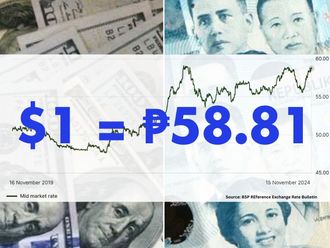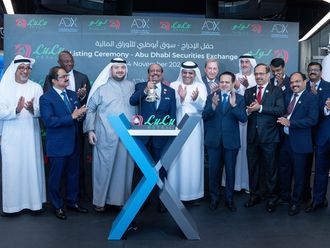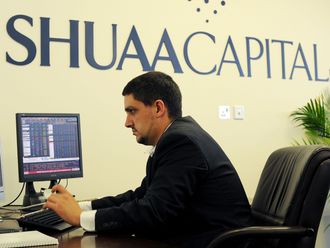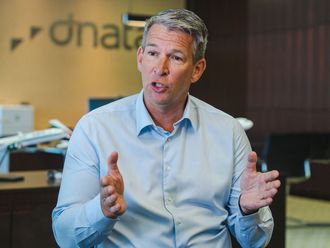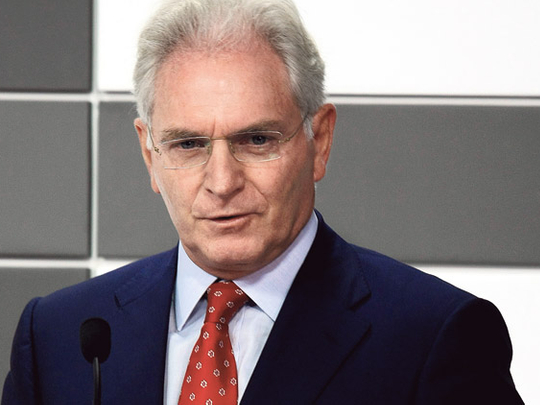
Dubai: In the context of the global economy emerging multi-polar in nature and the financial system becoming increasingly decentralised, the world needs a stable reserve currency that is independent of the fiscal weaknesses of individual nations, said Nasser Saidi, chief economist of the Dubai International Financial Centre.
Presenting a paper, The Role of Gold in the New Financial Architecture by Saidi and Fabio Scacciavillani, Director of Macroeconomics and Statistics at the DIFC, Saidi said under the new economic realities faced by the world, a single reserve currency issued by a country whose relative economic share is dwindling, exposes the world economy to severe instability and becomes a source of global systemic risk.
Viable solutions to this depend either on a multi-currency system without major government intervention or on an international currency backed by the largest economies. The first alternative runs the risk of exchange rate volatility relating to free floating currencies.
Growing demand
The second alternative is already available in a limited version in the form of SDRs (special drawing rights), which are the reserve asset created in 1969 through the International Monetary Fund.
While there has been a growing demand from the developing world for a stable global reserve currency in recent years, the DIFC economists argue that the current arrangement of SDRs is inadequate in terms of liquidity and policy framework.
"We need to modify the current composition of the SDR to include leading global currencies and gold to the basket that determines the value of the new SDR," said Saidi.
The value of the SDR was initially defined as equivalent to 0.888671 gram of fine gold — which at the time was also equivalent to one US dollar, given the prevailing gold exchange standard. After the collapse of the gold standard, however, the SDR was redefined as a basket of currencies, today consisting of the euro, Japanese yen, pound sterling and US dollar. The basket composition is reviewed every five years.
While the DIFC economists argue for the creation of a new reserve currency under the revamped SDR, they also called for representation of leading emerging market currencies and gold in the new reserve currency basket.
"It would be desirable to create a new SDR basket and include in it an asset whose value is largely uncorrelated with the value of fiat currencies. Gold would be the natural candidate with backing for the gold proportion coming initially from the IMF's gold stock," said Scacciavillani.
Under the current composition of the SDR basket the US dollar has 41.9 per cent weight while the euro has 37.4 per cent and the British pound and Japanese yen have 11.3 and 9.4 per cent, respectively.
For the revamped SDR, DIFC economists have called for 25 per cent weight for gold and a 15 per cent weight for the yuan.
Overall, the DIFC economists said it would be prudent for emerging economies including those in the Gulf to increase the share of their reserves in gold. The GCC countries have historically maintained less than five per cent of total reserves in gold in comparison to the European Central Bank's 25 per cent.
Save reserves from fiscal indiscipline
The world needs a currency regime that is independent of the fiscal profligacy of one nation that can devalue the savings of the rest of the world by devaluing its own currency, said Nasser Saidi, chief economist of the DIFC.
When one country's currency is used as a reserve currency, that country will have a tendency to have large current account deficits as it facilitates global trade.
This dilemma was first identified by Belgian-American economist Robert Triffin (Triffin's paradox) in the 1960s, who pointed out that the country issuing the global reserve currency must be willing to run large trade deficits in order to supply the world with enough of its currency to fulfil world demand for foreign exchange reserves.
The dilemma remained under control for all these years as parties on both sides of the equation enjoyed the mutual benefits of the US dollar's reserve status.
The US benefited by paying for imports with essentially costless US dollars. In turn, the US' main trading partners such as China enjoyed robust demand for their products, creating employment and income growth. As part of this trading interest, many countries reinvested their excess dollars back into US asset markets, notably US government debt.
"With the growing political and economic compulsion in the US to further weaken the dollar, emerging economies are increasingly worried about the future of their reserves. This calls for a new stable reserve currency independent of national fiscal policies," said Saidi.


